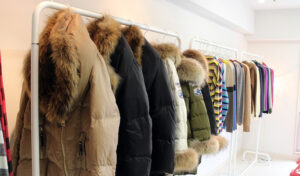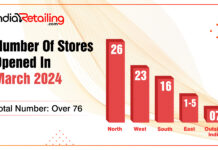1The Birth of the Winterwear Market
With increasing globalisation, industrialisation and spending power, there has been a continuous change in lifestyle which has led to the consumers developing a taste for seasonal clothing and occasional dresses.
Urbanisation, awareness, changing lifestyles, rising incomes, and the need for seasonal clothing, have led brands to add winterwear as a separate category within their portfolios.
The Indian winterwear market – which is clearly segmented into branded and unbranded segments – is expected to register growth at 9 per cent to reach Rs 32,000 crore by 2023. Currently, the unbranded segment commands nearly 70 per cent of the market share, with the branded segment trying hard to bridge the gap by innovating and offering new product ranges.
2The Winterwear Market Share
Men: The men’s winterwear market is expected to grow at a CAGR of 8 per cent to reach Rs 15,150 crore in 2023, the major products being shawls, mufflers, suits, jackets, sweatshirts, blazers and sweaters.
Women: The women’s winterwear market is expected to grow at 8 per cent to reach Rs 6,600 crore by 2023, major products in this segment being cardigans, sweaters, knee length woolen tunics, felt coats, colorful scarves and woollen leggings.
Boys: The boys’ winterwear market is expected to grow at a CAGR of 10 per cent to reach Rs 5,080 crore in 2023. Major products that make up this segment are sweater, jackets, woolen caps, and blazers (school uniforms).
Girls: The girls’ winterwear market is expected to grow at 10 per cent to reach Rs 5,000 crore in 2023, with products like knee length woolen tunics, sweaters, cardigans, colorful scarves, woolen leggings, sweaters and blazers (school uniforms).
ALSO READ: India’s Winterwear Category
3Buying Trends
For obvious reasons, in India, the sale of winterwear is generally higher in the four months from October to January, partly due to the cold weather and in part due to the festival, holiday and wedding season.
Consequently, most brands provide maximum discounts in this period, viz. Diwali shopping, Christmas, New Year discounts and end-of-season-sale in January-February. These four months are so good that brands tend to make as much during this time as they make in the other eight months of the year.
Brand conscious consumers prefer buying their winterwear during end-of-season-sales, at heavy discounts. Brands on their part prefer to clear out the season’s stock at some profit and launch new product lines for the next season in a bid to attract new consumers.
4Winterwear price points
Winterwear generally commands higher prices as compared to other categories due to the intricacies of design and the usage of wool fibers.
The winterwear market is majorly dominated by the unbranded segment due to its lower prices and wider range of products. If brands want to heighten their share they need to be innovative and work on a unique product line which can be offered at a competitive price point.
Players in the non-branded segment are also in the habit of procuring new, innovative and cheaper products through grey imports from China and Thailand. These generally attract consumers due to their sharp designs and low prices, thus making it difficult for bigger brands to penetrate the market.
5Adding Volume to the Winterwear Market
The winterwear market is growing in tandem with changing lifestyles. However, since this is a seasonal market, with category sales depending on the duration of the winter – which is unpredictable – brands need to invest heavily in their marketing and production strategies to avoid inventory issues.
To foray into the winterwear category a brand needs good infrastructure, economies of scale, and a good access to distributors and suppliers. One must also have deep pockets to counter the unorganised sector and also the foresight to launch a mid-premium product line every year to attract consumers who would generally turn to the unorganised segment.













